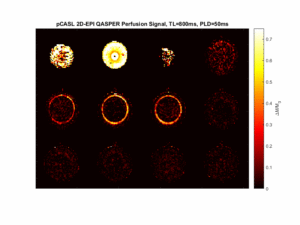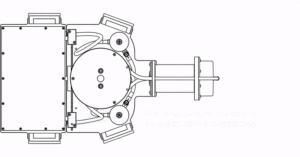QASPER
Quantitative Arterial Spin Labelling Perfusion Reference
Calibration and quality assurance standard for ASL perfusion MRI

Why use QASPER?
- To ensure consistency of your ASL acquisition over time
- To help with the development of new ASL pulse sequences
- To compare the values from ASL sequences across scanners
Are you using ASL to track disease progression? Do you wonder if quantitative ASL values vary because of hardware or physiology?
How does QASPER work?
QASPER provides a reliable, reproducible reference standard for Arterial Spin Labelling perfusion MRI. The phantom accurately replicates the physiological process of arterial blood delivery to tissue through a sophisticated three-compartment design. At its core, a porous polyethylene substrate with capillary-scale pores (≈10μm) is fed by 60 arteriole-scale tubes arranged in a ring configuration, creating a toroidal perfusion region that closely mimics in vivo capillary perfusion. The key advantage over volunteer scanning is absolute consistency: the flow rate of perfusate remains stable to within 3% throughout every measurement, providing a traceable ground truth for validating ASL sequences, tracking scanner performance over time, and harmonising measurements across multiple sites.


Flow Path Components
The first simulates the feeding arteries and arterioles that supply blood to an organ. Vessel geometry and flow velocities within this region match those found in the human body.
Compartment two uses a porous polymer substrate to simulate the microvascular, incoherent flow observed at the capillary bed.
The third compartment represents the remainder of the cardiovascular system; venous return from the organ to the heart where it is pumped back. A deliberately long, labyrinthine flow path ensures that none of the labelled bolus is recirculated before the label decays and ensures fully developed equilibrium magnetisation.
At the heart of the QASPER phantom is an MRI compatible pump that delivers liquid at a known flow rate to a simulated capillary bed. During operation, fluid is pumped around a closed system that is simply placed on the patient couch of an MRI scanner; it is not necessary to put tubing through the waveguides or to empty and re-fill the system at each use. The phantom continuously reports via wireless connection to a computer application its real-time operating state such as flow rate, temperature, battery drain etc, and can also be controlled by the user, for example to set the flow rate set point to a specified value.
Ready to standardise your ASL measurements?
Get in touch to learn more about QASPER and how it can improve your ASL quality assurance workflow.